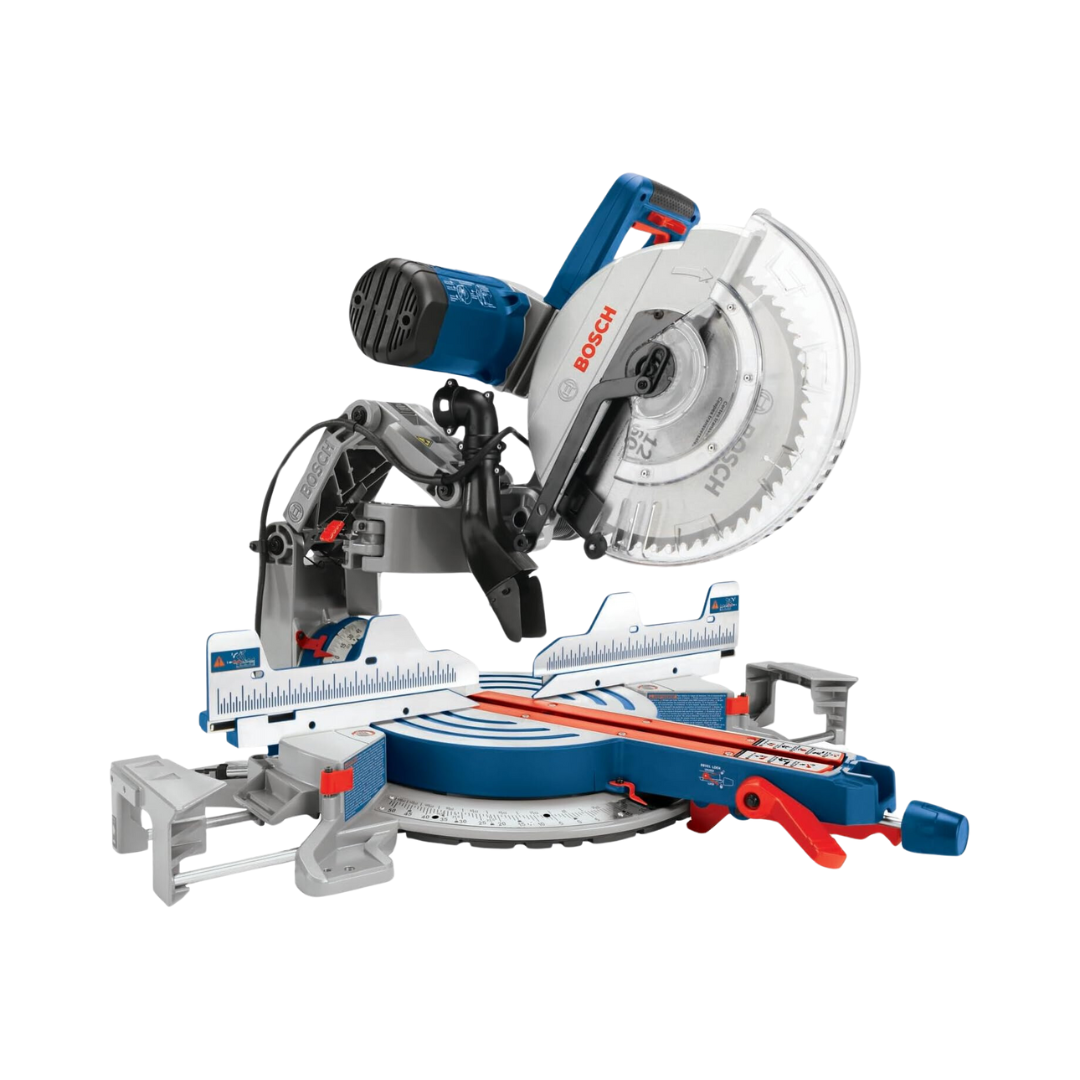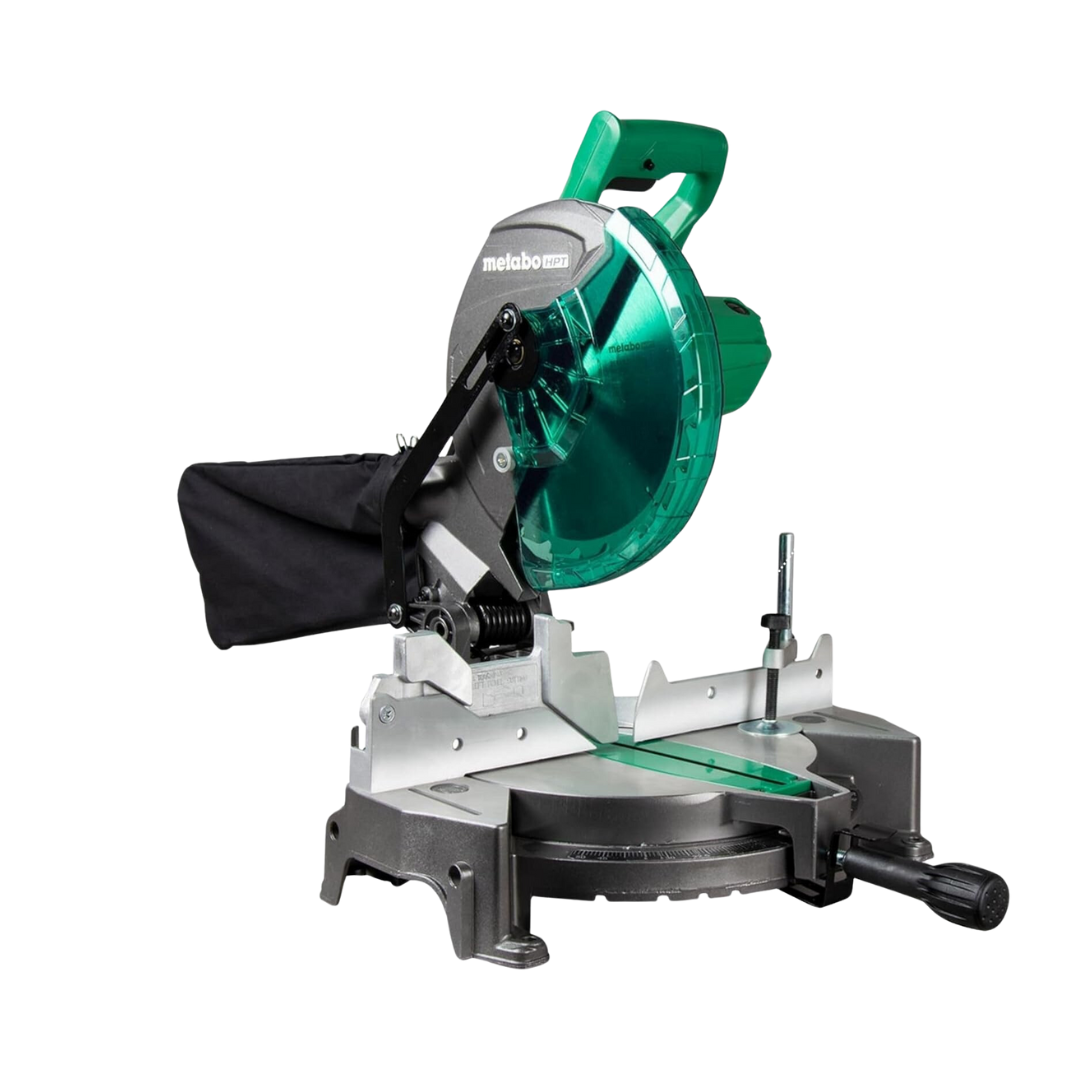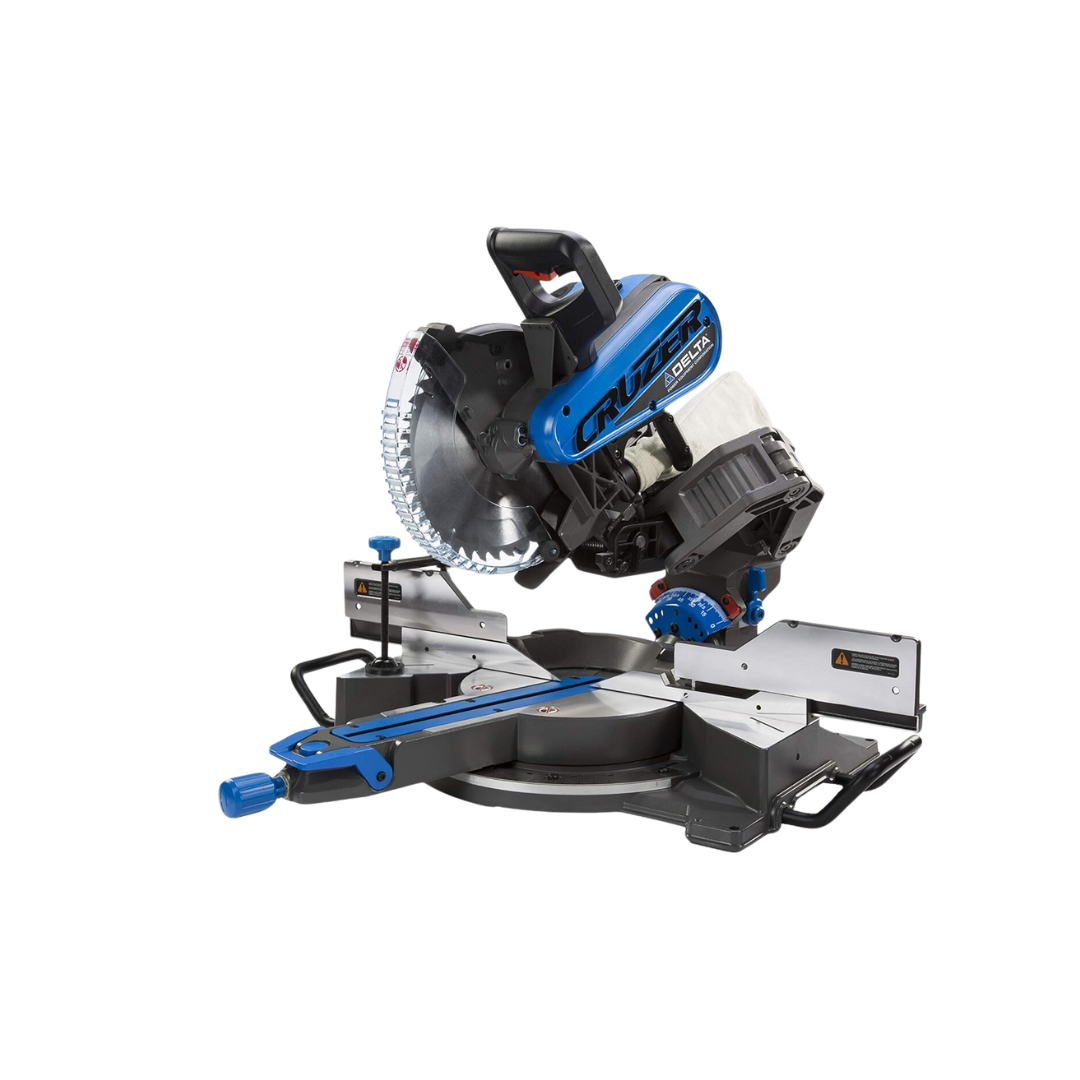We may be compensated if you purchase through links on our website. Our team is committed to delivering honest, objective, and independent reviews on home products and services.
- The miter saw are a specialized tool that allows woodworkers to make cuts at a variety of different angles, as shown in your guide, making them a must-have for contractors or any serious DIYers.
- The best miter saws we recommend range in price from $150 to $750. However, you don’t necessarily need to break the bank to find a high-quality miter saw.
- The best miter saw in this roundup is the Bosch Sliding Miter Saw due to its versatile and intuitive design, not to mention the miter saw’s outstanding durability.
Miter saws are specialty woodworking tools that can make quick and precise cuts to a variety of items, including crown molding, picture frames, and baseboards. Miter saws are effective at delivering accurate crosscuts, angled cuts, and bevel cuts in just minutes, making any home project much easier and achievable.
Our top pick is Bosch’s Sliding Miter Saw because of its durability and adjustability. The Bosch is a powerhouse with the capacity to cut woodworking pieces of multiple different sizes to fit your DIY needs. This miter saw comes in at about $650, but most of the miter saws in our review fall within the $150 to $750 range. Keep reading for more information on today’s best miter saws.
We put together this guide, complete with our recommendations and all the information on how to use a miter saw. We’ve also included some aspects to consider regarding which option may be best for your woodworking needs and some tips to maintain your miter saw with frequent use.
What Is The Best Miter Saw?
*Links open to product retail page.
The best miter saw is the Bosch Sliding Miter Saw, according to our TOH Team. However, we highlight a range of different options for a variety of needs below:
- Best Overall: Bosch Sliding Miter Saw
- Best Budget: Metabo Miter Saw
- Best Sliding Compound: Delta Compound Miter Saw
- Best Sliding: CRAFTSMAN Sliding Miter Saw
- Best Compound: SKIL Compound Miter Saw
Miter Saw Reviews
Before delving into our team’s reviews of the best miter saws, it’s worth comparing key features at a glance to help narrow down your search.
Compare Top Miter Saws
| Product | Motor | Speed | Weight | Length | Warranty |
|---|---|---|---|---|---|
| Bosch Sliding Glide Miter Saw | 15 amp | Not listed | 88.2 pounds | 12 inches | 1 year |
| Metabo HPT Compound Miter Saw | 15 amp | 5,000 RPM | 24.2 pounds | 10 inches | 5 years |
| Delta Sliding Compound Miter Saw | 15 amp | 4,000 RPM | 55 pounds | 10 inches | 5 years |
| CRAFTSMAN Sliding Miter Saw Kit | 15 amp | 3,800 RPM | 21.8 pounds | 7.25 inches | 3 years |
| SKIL Compound Miter Saw | 15 amp | 4,500 RPM | 42.5 pounds | 12 inches | 3 years |
| Product | Motor | Speed | Weight | Length | Warranty |
Best Overall
- Blade size: 12-inch blade
- Motor: 15-amp
- Weight: 88.2 pounds
Pros and Cons
✔ Features a highly versatile and intuitive design
✔ Offers best-in-class durability
✘ Stand and table may require stability support
✘ Costs more than many competing saws
Bosch Miter Saw: What Customers Are Saying
Many customers highlighted the versatility of the Bosch miter saw. Customers also said that it was easy to use and durable. However, our team encountered a handful of negative reviews that indicated the miter saw’s stand and table weren’t as stable as expected.
Best Budget Miter Saw
- Blade size: 10-inch blade
- Motor: 15-amp
- Speed: 5,000 revolutions per minute (RPM)
- Weight: 24.2 pounds
Pros and Cons
✔ Features a powerful and easy-to-use design
✔ Price point is more affordable than most competing models
✘ Construction is not competitively durable
✘ Operating volume is louder than many alternative options
Metabo HPT Miter Saw: What Customers Are Saying
Of the many reviews we read, numerous customers praised this 10-inch miter saw from Metabo for its ease of use, power, and affordability. However, less satisfied customers complained about how quickly their miter saw broke down. We also encountered a few reviews stating the saw was louder than other saws they had used.
Best Sliding Compound Miter Saw
- Blade size: 10-inch blade
- Motor: 15-amp
- Speed: 4,000 RPM
- Weight: 55 pounds
Pros and Cons
✔ Features a portable yet sturdy design
✔ Offers smooth slide handling
✘ May require frequent realignment and calibration
✘ Guideline may be difficult to see under certain lighting conditions
Delta Compound Sliding Miter Saw: What Customers Are Saying
According to our verified buyer research, positive reviews highlighted the portability of the build and the smoothness of the Delta miter saw’s slide. On the other hand, we encountered a few critical reviews that described occasional alignment issues. Two reviewers found the saw’s shadow line difficult to see under bright light.
Best Sliding Miter Saw
- Blade size: 7.25-inch blade
- Motor: 15-amp
- Speed: 3,800 RPM
- Weight: 21.8 pounds
Pros and Cons
✔ Features a highly portable and light design
✔ Operating volume is competitively quiet
✘ Not ideal for larger jobs or heavy-duty work
✘ Struggles to cut acute angles
CRAFTSMAN Sliding Miter Saw: What Customers Are Saying
Our research showed that satisfied buyers of this CRAFTSMAN miter saw liked that it was lightweight, maneuverable, and quiet. However, we came across a few reviews by users who felt it wasn’t reasonably powerful and struggled to cut at a 45-degree angle.
Best Compound Miter Saw
- Blade size: 12-inch blade
- Motor: 15-amp
- Speed: 4,500 RPM
- Weight: 42.5 pounds
Pros and Cons
✔ Offers best-in-class safety features
✔ Includes a highly visible laser guideline
✘ Tilting action may be more challenging than expected
✘ Not ideal for frequent job site relocation
SKIL Miter Saw Stand: What Customers Are Saying
According to our consumer research, customers repeatedly praised this SKIL miter saw for its top-notch safety features, portability, and affordable price point. They also said that it was perfect for the woodworking hobbyist. However, we also encountered a minority of negative reviews that mentioned how difficult it was to tilt the saw for cutting.
Miter Saw Guide
As you consider the above miter saws, look at their cut type, blade length, power level, and dust collection system to ensure that you choose a model that fits your carpentry needs. The buying guide below explains these factors for you.
Types of Miter Saw Cuts
Cut type refers to how a miter saw can cut a piece of wood. The three most popular cuts are crosscuts, miter cuts, and bevel cuts.
- Crosscuts: These are basic cuts that run parallel to the workpiece’s sides.
- Miter cuts: These are angled cuts that slice the workpiece at an angle. The most common miter cut is at a 45-degree angle to seat two corners of wood together.
- Bevel cuts: These are angled cuts that cut into the wood’s thickness rather than its width. Seen most often when two baseboards meet at a corner, bevel cuts look decorative and seamless.
Miter Saw Blades
The size of a miter saw is determined by the size of the blade that it holds. Blade size affects what size of wood you can cut. If you work with thicker wood, you may want to purchase a miter saw with a 12-inch or larger blade, as a 10-inch blade may not be long enough to cut through it.
To learn more about miter saw blades, watch this video from Ask This Old House:
Miter Saw Dust Collection
Investing in a miter saw with a dust collection function keeps your workspace clean. Nearly all miter saws have a dust bag that collects sawdust, though some models also have a hose port to connect a vacuum cleaner.
Miter Saw Power
Nearly all miter saws are corded, usually featuring a 10-, 12-, or 15-amp motor. Powerful 15-amp motors have their place with experienced carpenters, but most homeowners can complete various woodworking projects with a 10- or 12-amp miter saw.
Cordless miter saws are beginning to pop up on the market. However, battery runtime can be an issue with them, especially if you need to make numerous cuts. You don’t want to pause your project to plug your saw into a charger.
How To Use a Miter Saw
Here is a visual guide on how to best use a miter saw.
- Holding the work firmly against the fence with one hand, use your other hand to pull the saw all the way toward you.
- Then, pull the trigger and lower the blade fully.
- Slowly push the blade forward through the wood.
- Raise the saw, release the trigger, and wait for the blade to stop before removing the pieces.
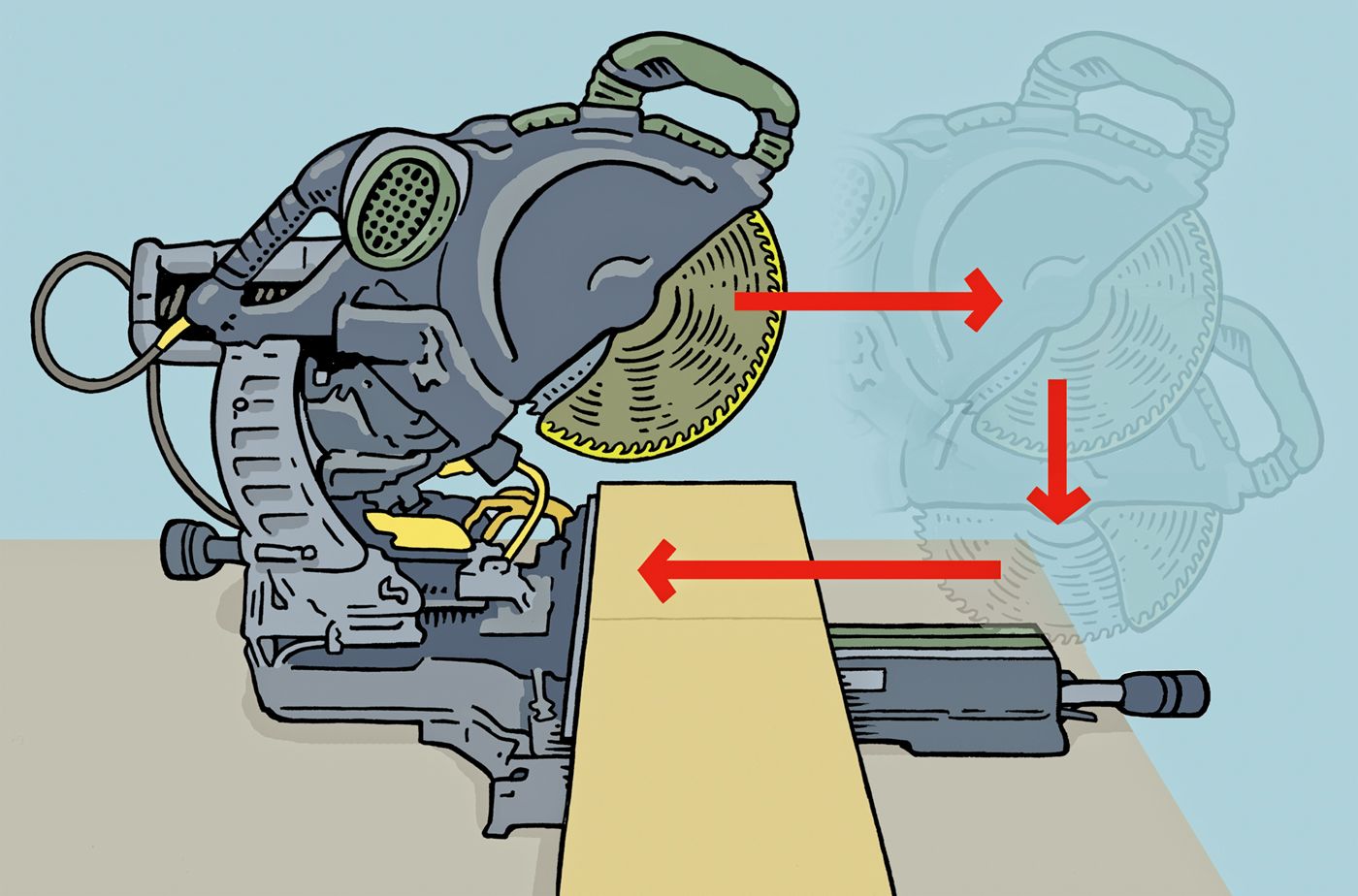
“Here’s an easy way to fine-tune your cuts: Lower the blade—don’t start it—and push your work against its side, deflecting it slightly. Now, raise the blade and make the cut. Only a thin sliver will come off.” —Norm Abram
How to Cut a Bevel On a Miter Saw
Whether you’re making miters or straight cuts, beveling the cut slightly toward the back side of a piece of trim—a trick known as back beveling—helps ensure tight butt joints. You can tilt the blade, of course, but it’s quicker and easier to shim up the stock by slipping a pencil underneath it, close to where the cut will be made.

How to Make Dado Cuts With Miter Saw
Mark the desired depth across the end of scrap stock. Unplug the saw, loosen its depth stop, and lower the blade until its lowest tooth hits the mark. Retighten the stop. Now shim the stock away from the fence so that the lowest tooth meets the back edge of the work-piece. If a test cut looks good, cut each side of the dado, then make repeated cuts to remove the material in between.
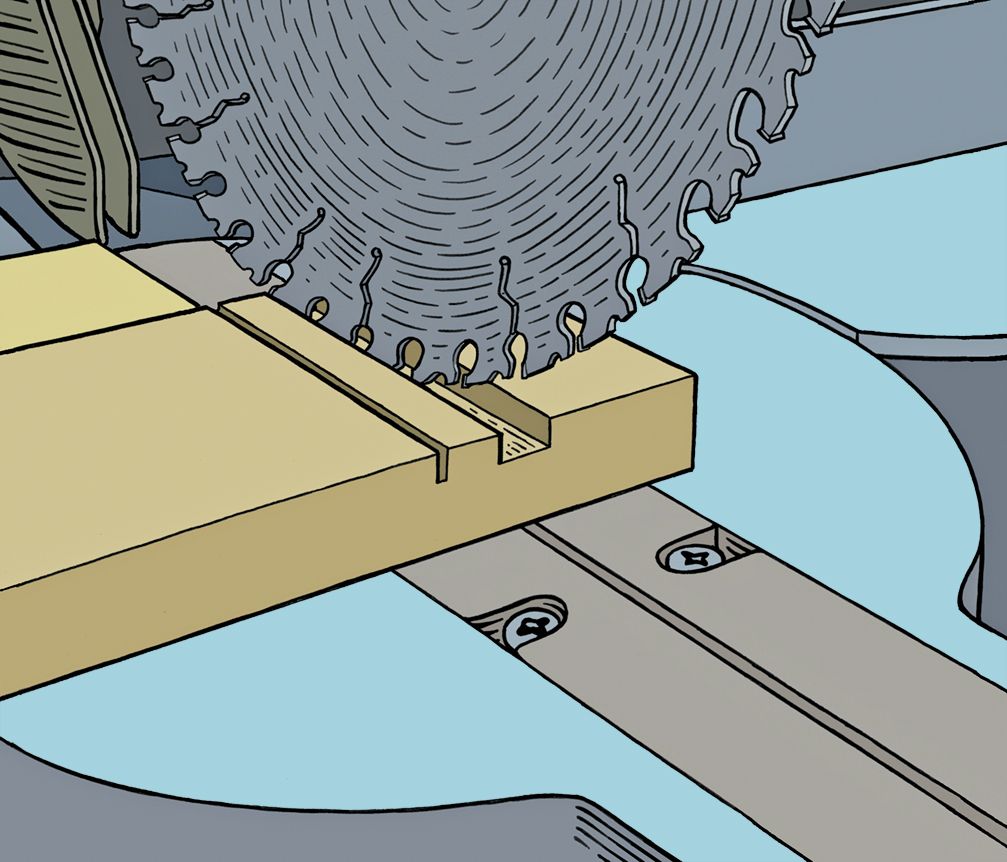
Miter Saw Expert Tips
This Old House general contractor Tom Silva has some important miter saw tips to share with DIYers like you. These tips will help you make cuts both accurately and safely.
- Before you turn on the miter saw, clear items on the ground to ensure stable footing.
- Wear safety glasses, work gloves, closed-toed shoes, and earmuffs for protection.
- Hold the wood tight to the fence with one hand, and work the saw with the other one.
- If a piece of wood is too large for your saw, cut it in two passes. First, cut the piece as far as the blade reaches. Then, flip it over, and meet the cut from the other side.
How to Test for Cut Accuracy
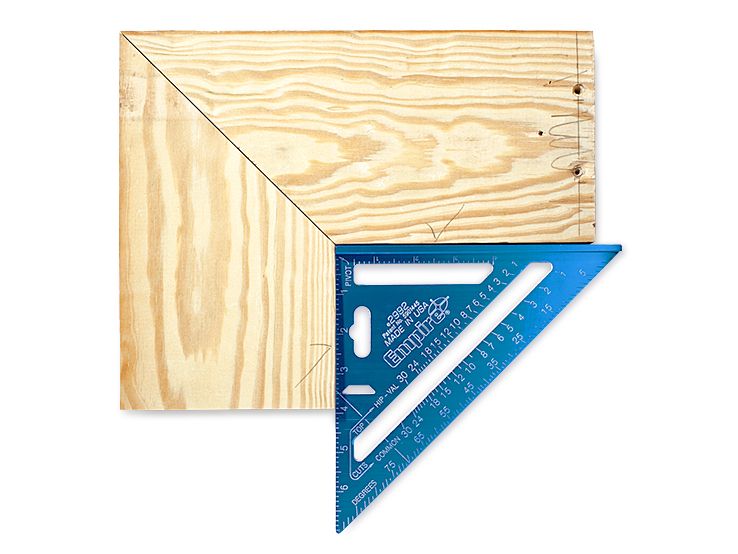
Straight cuts: Make a 0-degree cut through a stack of two pieces of 1×4, edges to the fence. Butt the cut ends together, with the same edges against the fence. If there’s a gap, adjust the saw.
Miters: Make a 45-degree cut through two stacked pieces, edges to the fence. Mark these edges and put them against a square, as shown. The cuts should mate perfectly.
Bevels: Cut a 45-degree bevel through two pieces set on edge, faces against the fence. Form a corner against a square to see if the cuts mate.
Miter Saw FAQs
Below are some frequently asked questions about miter saws:
What’s the difference between a chop saw and a miter saw?
A chop saw can only make crosscuts as its blade moves up and down at a 90-degree angle. Miter saws are equipped with adjustable blades that can make numerous types of cuts, including crosscuts and compound cuts.
Can a miter saw cut through metal?
You can cut metal with a miter saw if you have a metal-cutting blade. Also, make sure that you’re cutting at a low enough RPM to prevent excessive sparking and burnout.
Can a miter saw rip boards?
Ripping, which is the process of cutting boards lengthwise, is done with a table saw instead of a miter saw. While you can make rip cuts with a miter saw, it poses safety risks because it’s not designed to be used that way.
Are miter saws safe?
As with all power saws and other power tools, operating a miter saw comes with some risks. However, if you follow the proper precautions, you can prevent accidents. We specify our safety recommendations in the previous section.
How We Selected the Best Miter Saws
To provide our readers with the best miter saw recommendations possible, we rely on several key sources of information to help guide our selection process.
Initial Research: Our research process began by generating a list of miter saws with a significant number of verified-buyer reviews and an average customer review rating of 4–5 stars. We looked at positive and negative reviews alike, focusing on information from both satisfied and critical buyers.
Expert Insights: Through our years of experience, we’ve learned that listening to what others have to say is critical to building accurate, well-rounded articles. To complement our in-house expertise, our team looked at reviews and videos from trusted publications and independent testers, spoke with subject matter experts, and drew insights from reader contributions.
Final Product Selection: We then began fine-tuning our list by replacing older models with the latest versions and eliminating any discontinued models. From there, we pared the list down further by comparing each model’s feature set and selecting the best-in-class options for a variety of buyers, budgets, and scenarios.
Why You Can Trust Us
This Old House has empowered homeowners and DIYers for more than four decades with top-notch home improvement advice in the form of television programs, print media, and digital content.
Our team focuses on creating in-depth product and service review content. To date, we’ve published countless reviews of garden, lawn, and outdoor products—from fertilizer and garden hoses to patio furniture and snow blowers.
Once we conclude our research, we craft a comprehensive, user-friendly article of recommended products and additional information to help our readers make the right purchase.
Questions or comments?
To share feedback or ask a question about this article, send a note to our team at reviews@thisoldhousereviews.com.
